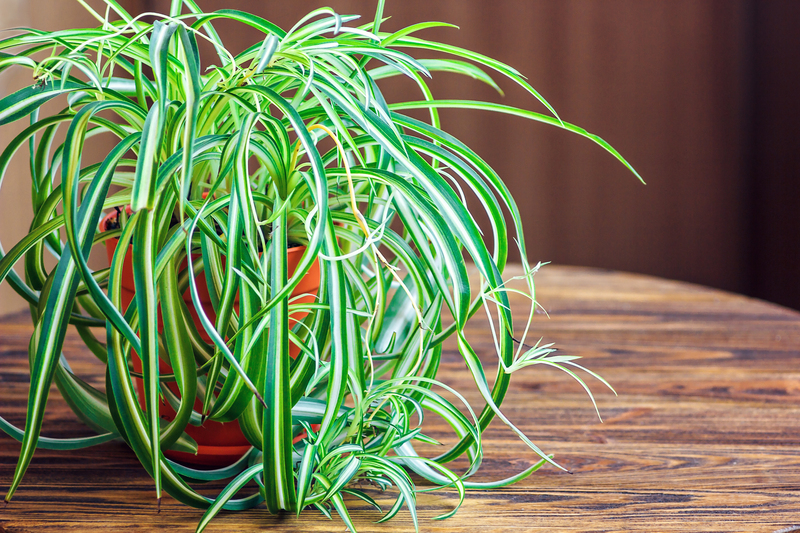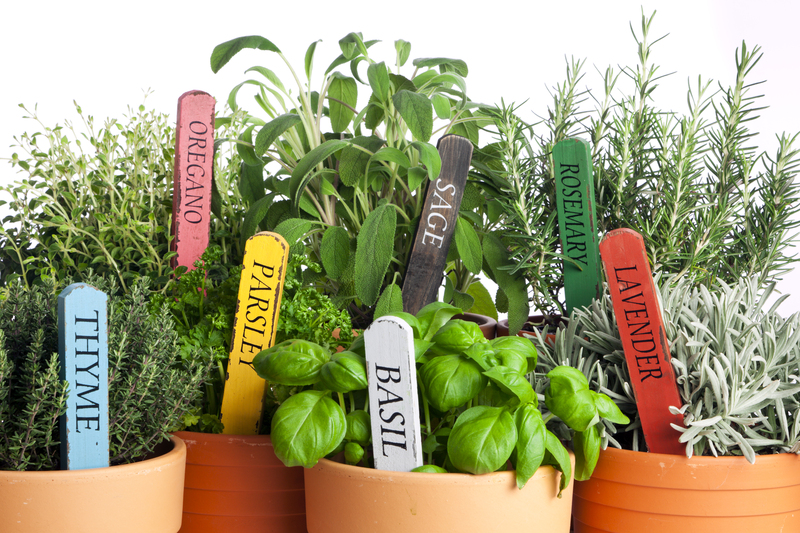Designing a Safe and Fun Garden for Dogs
Posted on 29/05/2025
Designing a Safe and Fun Garden for Dogs: The Ultimate Guide
Creating a dog-friendly garden is one of the most rewarding projects a pet owner can undertake. Your goal is to develop a green space that balances both beauty and functionality, where your furry friends can play, relax, and explore safely. Designing a safe and fun garden for dogs requires some research, planning, and understanding of canine behavior, but the result will be a haven for both you and your pets. In this comprehensive article, we guide you through every step of the process, from layout planning to plant selection and playful features.

Why Is a Dog-Friendly Garden Important?
Dogs thrive in environments where they can satisfy their instincts, explore new scents, and expend energy. However, conventional gardens often include plants and features that can pose hidden dangers. A well-designed, fun dog garden reduces hazards, prevents destructive behaviors, and creates cherished family spaces that suit both human and canine needs.
Key Principles of Dog Garden Design
When creating a safe and engaging dog garden, keep these fundamental principles in mind:
- Safety First: Remove toxic plants, ensure fences are secure, and eliminate sharp objects.
- Stimulating Environment: Incorporate textures, scents, toys, and exploration zones.
- Durable Materials: Use surfaces and structures that withstand digging, running, and chewing.
- Shade and Shelter: Offer areas to cool down and stay dry, especially during hot or rainy weather.
- Easy Maintenance: Aim for low-maintenance landscaping to simplify clean-up and upkeep.
Planning Your Dog-Centric Garden Layout
Understanding Your Dog's Needs
Every dog is unique. Consider your dog's breed, size, age, and temperament when designing your garden. For example:
- High-energy breeds need ample running space.
- Older or smaller dogs may appreciate soft, gentle surfaces.
- Curious pups could benefit from a scent trail or interactive play areas.
Mapping Garden Zones
Divide your yard into distinct areas to serve both canine safety and enjoyment:
- Play Zone: Open grassy space for running, chasing toys, and games.
- Digging Area: Designated sandy or earthy spot to satisfy digging urges (and save your flower beds!).
- Rest & Shade: Cool corners under trees, pergolas, or purpose-built shelters.
- Water Feature: Splash pools, water fountains, or shallow streams (always supervised).
- Potty Patch: Easily cleanable area with mulch or gravel for elimination, away from children's zones.
- Pathways: Defined walking routes encourage gentle patrol and movement through the garden.
Choosing Dog-Safe Plants for Your Garden
Plants to Avoid
Some popular garden plants are toxic to dogs. The following species should never appear in a pet-friendly yard:
- Oleander
- Foxglove
- Lily-of-the-valley
- Azalea
- Hydrangea
- Daffodils
- Tulips
- Rhododendron
- Sago palm
- Castor bean
Tip: Regularly check updated lists of dog-toxic plants online, as new issues may arise with rare species.
Dog-Friendly Flowers and Shrubs
Instead, choose hardy, safe, and often non-toxic plants such as:
- Marigolds
- Sunflowers
- Snapdragons
- Roses (thornless varieties recommended)
- Camellias
- Magnolia
- Ornamental grasses (such as Blue Fescue)
- Herbs (basil, thyme, rosemary, parsley)
- Lavender (in moderation for calming scent)
Always supervise initial interactions with new plants to avoid accidental munching or uprooting.
Safe Surfacing and Pathways
Paw-Friendly Lawn Alternatives
While grass lawns are classic for dogs, they can struggle with heavy traffic or frequent urination. Consider these safe, dog-friendly ground covers:
- Clover: Soft, resilient, and nitrogen-rich for healing brown patches.
- Buffalo grass: Low water needs and durable for running games.
- Artificial turf: Easy to clean, great for high-traffic spaces, but can get hot in full sun.
- Mulch (avoid cocoa mulch): Pine or cedar chips are safe; provides cool surface and controls odor.
- Pea gravel: Excellent for paths and potty areas, but choose smooth stones to protect paws.
Creating Dog Paths
Dogs like to patrol their territory. Installing clear, wide paths using stone, brick, woodchips or durable stepping stones provides both access and reduces trampling of delicate plants. Make sure paths are wide enough for your dog to run comfortably, typically 18-24 inches or wider for big breeds.
Fencing and Boundaries: Keeping Dogs Secure
Safe and Attractive Fences
Secure fencing is essential in a well-designed dog garden. Here's what to consider:
- Height: Most medium and large breeds require at least 4 to 6 feet tall fences.
- Material: Picket, wrought iron, or vinyl are durable and pet-safe, though privacy panels or hedges offer added seclusion.
- Gaps & Digging Prevention: Ensure no gaps at the base; use buried chicken wire or rocks to thwart diggers.
- Self-Closing Gates: Prevent accidental escapes with automatic or spring-loaded latches.
- Window Panels: Plexiglass portholes allow curious dogs to observe passersby without barking or anxiety.
Natural Boundaries
Plant dense, non-toxic shrubs or hedges along the fence line for extra security and to block exciting outside distractions. Boxwood, laurel, or privet are sturdy choices that can handle rough canine play.
Fun and Enrichment: Making Your Garden a Doggy Paradise
Interactive Play Features
- Agility Equipment: DIY tunnels, weave poles, or jumps using PVC pipes.
- Earth Mound or Platform: A gentle hill for climbing, overlooking, or sunning.
- Scent Garden: Plant herbs and install "snuffle" mats for natural foraging games.
- Hidden Treat Dispensers: Interactive toys that provide mental stimulation and keep your dog engaged.
Water Play
- Dog Pools: Rigid plastic kiddie pools are the safest option for supervised splashing.
- Fountains or Bubblers: Gentle, dog-accessible water flows encourage hydration and play.
- Mud-Free Water Access: Place pavers or gravel around water features for easy entry and clean paws.
Comfort and Rest Spaces
- Shady Retreats: Use tarps, awnings, or trees to block the sun and prevent overheating.
- Outdoor Bedding: Provide washable, chew-resistant mats or dog hammocks off the ground.
- Dog House or Tunnel: Weatherproof shelters give your pup a cozy spot in all seasons.
Maintenance Tips for a Healthy, Dog-Safe Garden
- Regular Inspection: Check fences, toys, and plants for wear, damage, or hazards.
- Cleaning: Promptly clear waste, fallen fruit, and standing water to prevent pests and diseases.
- Non-toxic Products: Choose pet-safe fertilizers, weed killers, and mulches.
- Secure Tools and Chemicals: Lock away sharp garden tools, baits, or pesticides out of canine reach.
- Rotate Toys: Keep your dog's interest high by changing play objects regularly.
Training Tips for Garden-Friendly Behavior
- Supervised Introductions: Guide your dog around their new garden, reinforcing positive behaviors with treats.
- Designated Digging Zone: Teach your dog to use their "legal" digging spot with buried toys.
- Gentle Correction: Discourage unwanted chewing or trampling with redirection and positive reinforcement.
- Consistent Potty Training: Reward elimination in the chosen area to maintain garden cleanliness.
Common Mistakes to Avoid in Dog Garden Design
- Overlooking Plant Toxicity: Don't assume ornamental plants are safe until you've checked reliable sources.
- Fragile Landscaping: Avoid delicate flowers or arrangements that can't withstand playful paws.
- Skipping Shade: Dogs, especially those with thick coats, are prone to heatstroke in unshaded yards.
- Poor Drainage: Low areas that collect water may harbor bacteria, parasites, or cause muddy messes.
- Fencing Gaps: Small gaps under or between fencing panels are invitations for escapes or injuries.
- Ignoring Enrichment: Bored dogs can become destructive--include structures and toys for stimulation.

Seasonal Considerations for Safe Dog Gardens
- Summer: Provide shade, cool water, and be wary of hot surfaces (artificial turf, stones).
- Winter: Offer insulated shelters, check for ice hazards, and avoid salt-based snow melts (toxic if ingested).
- Spring/Fall: Secure bulbs and seeds; watch out for fungus or mushrooms, which can be highly toxic.
Final Thoughts: A Joyful, Safe Outdoor Haven for Dogs and Owners
With some thoughtful design and regular care, your garden can be transformed into a paradise for your dog and your family. By prioritizing safety, encouraging positive play, and choosing non-toxic plants, you'll create a space where tails wag, noses twitch, and lifelong memories are made together.
Remember: Designing a safe and fun garden for dogs is not just about preventing accidents; it's about fostering joy, health, and connection in an environment both you and your dog will love. Happy gardening!

